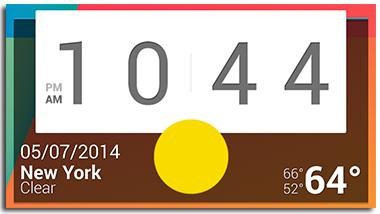No matter how dazzling is the display of your new smartphone,
- how powerful is its processor?
- how high resolution its camera sensor is?
- does the battery of your phone runs out of show?
Because a high-end smartphone dying in the middle of the day is no one’s dream come true.
That is the reason why most decent phones started coming packed with at least 3,000 mAh batteries and hardware and software tweaks to ensure saving as much juice as possible. But those phones with gigantic batteries still faced a major problem – charging them took a hell lot of time. However, things have been changing gradually on this front and fast charging technology has proven to be a major breakthrough.
Be it Snapdragon’s Quick Charge v2.0, Samsung’s Adaptive Fast Charging or Oppo’s VOOC Flash Charge, all of them boast of cutting down the charging time significantly.
What is fast charging?
As smartphone screens started increasing in size and chipsets started becoming faster, charging technology had to evolve to keep up with the bigger batteries that took more time to deplete as well as recharge. One of the most popular fast charging techniques that is used today is Qualcomm’s Quick Charge 2.0, which as the name suggests is in its second generation, and is capable of charging a mobile phone by 75% faster speed than a normal 5V/1A charger. Qualcomm integrates a power management circuit in its chipset that helps in charging the battery rapidly. While all phones featuring Snapdragon 800 chipset and up, come with quick charging options, you will need a charger with 9V/1.67A output to put the technology to use.
Another player in the field of fast charging is Oppo, which uses Qualcomm’s chipsets but employs Voltage Open Loop Multi-Step Constant-Current Charging (VOOC). This method consists of several battery cells being charged simultaneously with high voltage current and a seven point charger instead of the usual five point one. Samsung, HTC and Intel also use Qualcomm’s Quick Charge v2.0 technology, but modify and market them with different names.
Should you buy a phone without a removable battery?
Although most of us can make do with a handset that requires charging once a day, there are some people who never put their phones down. Such people either keep their phones hooked to a charger the whole day or carry an extra battery in case they need to swap it for an instant recharge. But the days of phones with removable batteries seem to be numbered as the market is getting dominated by devices with non-removable batteries (Example: the Galaxy S6). And quite legitimately so because we have every modern technology at our disposal to avoid messy ancient practices such as swapping batteries and force rebooting the phone in the process.
What is fast charging?
As smartphone screens started increasing in size and chipsets started becoming faster, charging technology had to evolve to keep up with the bigger batteries that took more time to deplete as well as recharge. One of the most popular fast charging techniques that is used today is Qualcomm’s Quick Charge 2.0, which as the name suggests is in its second generation, and is capable of charging a mobile phone by 75% faster speed than a normal 5V/1A charger. Qualcomm integrates a power management circuit in its chipset that helps in charging the battery rapidly. While all phones featuring Snapdragon 800 chipset and up, come with quick charging options, you will need a charger with 9V/1.67A output to put the technology to use.
Another player in the field of fast charging is Oppo, which uses Qualcomm’s chipsets but employs Voltage Open Loop Multi-Step Constant-Current Charging (VOOC). This method consists of several battery cells being charged simultaneously with high voltage current and a seven point charger instead of the usual five point one. Samsung, HTC and Intel also use Qualcomm’s Quick Charge v2.0 technology, but modify and market them with different names.
Should you buy a phone without a removable battery?
Although most of us can make do with a handset that requires charging once a day, there are some people who never put their phones down. Such people either keep their phones hooked to a charger the whole day or carry an extra battery in case they need to swap it for an instant recharge. But the days of phones with removable batteries seem to be numbered as the market is getting dominated by devices with non-removable batteries (Example: the Galaxy S6). And quite legitimately so because we have every modern technology at our disposal to avoid messy ancient practices such as swapping batteries and force rebooting the phone in the process.
Originally Posted on Androidguys.com

No comments:
Post a Comment